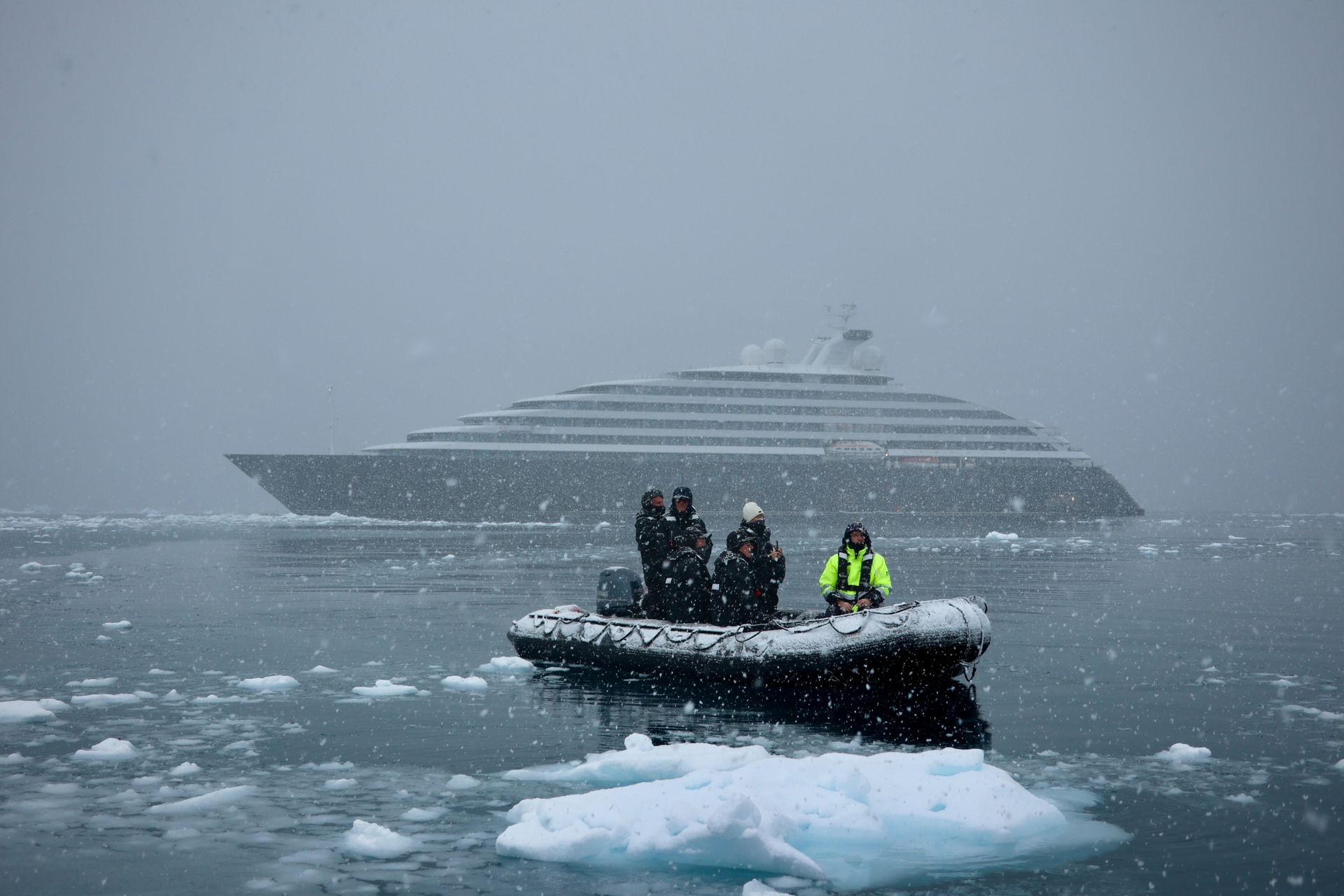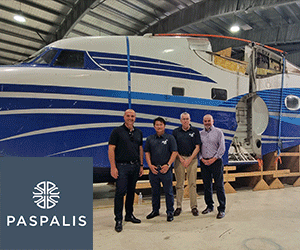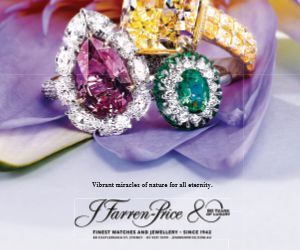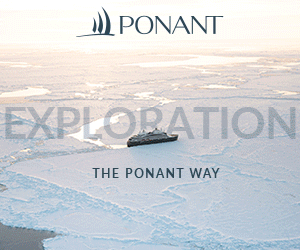1MG FlippingBooks
NEW HORIZONS FOR THE CRUISE INDUSTRY
Rose Lane
When the newly-repurposed Peninsula and Oriental mail delivery ship set out from Southampton on the world’s first dedicated leisure cruise in 1844, its passengers could not have imagined that such cruises would one day be taken in ships twenty stories high and boast “neighbourhoods” and a “Central Park”.
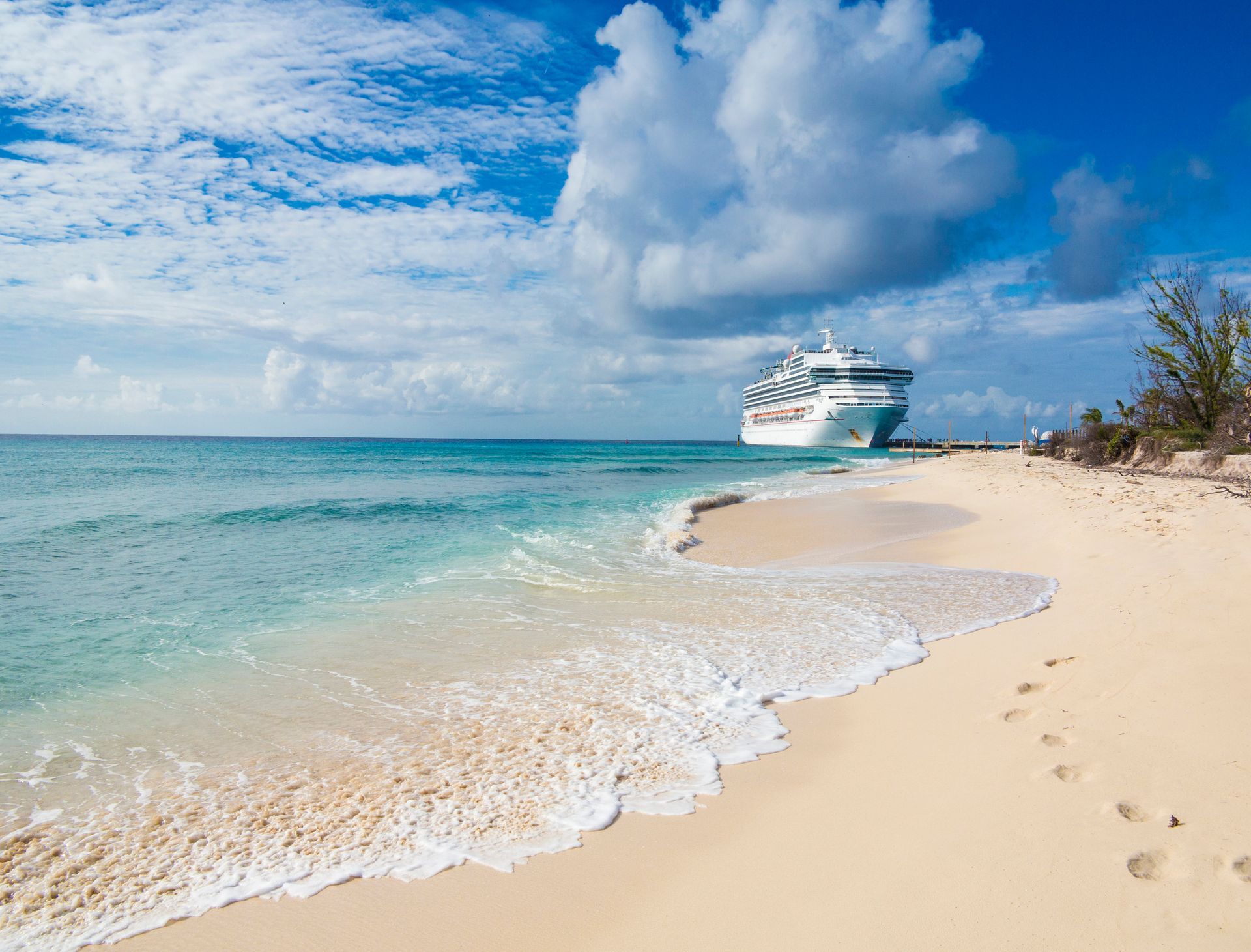
The latest of these mega-ships, Royal Caribbean’s
Icon of the Seas, is currently under construction in Rostock, Germany and when it sets sail from Miami in 2024 will be the world’s largest cruise ship, capable of carrying 7,600 passengers. It is this ship that will have its own “Surfside neighbourhood”, a space for families including a waterpark and child-friendly buffet restaurant. Sleeping up to eight guests, the suites, called townhouses, spread over three levels and include three bathrooms, a dining room and kitchenette, a daybed, a slide from the children’s bedroom to the living room, and a cinema room, complete with popcorn machine.
The ship will also have an infinity pool, a waterfall under the AquaDome, and an ice-skating arena where performers will skate surrounded by an enormous digitally-mapped screen. The ship will boast twenty restaurants with themes – the New York jazz-era Empire Supper Club, for example – offering everything from sushi rolls to caviar and wagyu steaks. It’s sheer size means Brisbane is the only Australian port it will be able to access.
Silversea’s
Silver Nova ship is the ultimate in luxury. It commenced cruising in 2023 and can carry up to 728 guests. The ship’s maiden voyage was through the Mediterranean, with the Americas, Alaska, Asia, Australia, and New Zealand to be added in 2025. The ship has six restaurants and five bars. It’s signature S.A.L.T (Sea And Land Tastes) kitchen has a menu that changes with each destination, using local recipes and ingredients. Here guests can enjoy an immersive cooking experience, working alongside the chefs.
The Venetian Lounge is a two-storey theatre using the latest in audio-visual technology and for daytime lectures, the theatre allows in an abundance of natural light. To experience a traditional Atlantic crossing, the Silver Nova travels from Lisbon to New York via the Azores over 33 days.
In March this year, Seabourn Cruises announced new expeditions on their two new vessels, the
Seabourn Venture and the
Seabourn Pursuit. These ships are purpose built for voyages in the Arctic and Antarctic as well as the South Pacific, and will begin voyages in the Kimberley region starting in June 2024. The ships have ice-strengthened hulls and advanced manoeuvring technology for superior stability, safety, and comfort. There are 132 oceanfront suites per vessel, all with verandas, two custom-built submarines, 24 Zodiacs and kayaks and a 24-person expedition team. Guests also have access to award-winning dining, with complimentary premium spirits and fine wines available at all times.
Robin West, Vice President and General Manager of Expeditions says, “These new expeditions are going to be thrilling and offer so many opportunities for guests to discover the natural and cultural wonders found in the some of the farthest corners of the planet, including our first-ever visit to the Kimberley in Australia. Best of all, guests will be experiencing everything in the company of Expedition Team members who will bring the wonders of each destination to life. “
One of the last true wilderness destinations, the sparsely inhabited Kimberley region can also be explored on smaller vessels without foregoing comfort. True North ships are purposely designed to get as close as possible to the wonders of this region, safely navigating the shallow river systems that lead to – and even directly under – spectacular waterfalls like King Cascade. The ships also have an onboard helicopter can carry up to six guests to remote picnic spots and smaller “adventure boats” designed to navigate tighter corners to view Aboriginal rock-art or swim at cool, fresh water holes. Carrying a maximum of 36 passengers, the trip is a close-and-personal experience, with 22 crew members assisting, informing and guiding activities like fishing and scuba-diving. And despite being a smaller ship, it is still fitted with “computer-controlled stabilisers” to minimise seasickness. Both the
True North and
True North II ships are also available for private charter.
Cruises go between Broome and Kununurra, in either direction, with passengers disembarking at Wyndham before transferring to a courtesy coach to Kununurra. Cruises are run from 7 to 13 nights, with a short 4-day cruise from Broome to the Buccaneer Archipelago to see the extraordinary Horizontal Falls. This is a phenomenon where water rushes through two, short, narrow gorges as the changing tide drops the water level up to 10 metres.
For passengers for whom the destination is a high priority, cruises to the Antarctic provide luxury as well as adventure. Hurtigruten Expeditions have ships capable of carrying around 500 passengers. They set sail from Ushuaia, Argentina and cross the Drake Passage to the Antarctic Peninsula. While they too include a pool and spa on deck, these are naturally closed when the ship reaches the ice, with passengers on board one expedition building a snowman on deck as the ship sailed past the British Antarctic base.
The
MS Fridtjof Nansen is the latest addition to the Hurtigruten fleet. It is designed with the comfort of passengers in mind, but perhaps more importantly, it is designed to limit the impact on the Antarctic environment. There is a fleet-wide ban on single use plastic, so every passenger is supplied with an aluminium water bottle and encouraged to reuse sheets and towels to save on energy, water, and detergent, while soap and shampoo are supplied in refillable in-shower containers.
Former passengers, Karen and George Pedley, say the fragility of the Antarctic environment was one of the things most emphasised on their trip in December 2022. All clothing to be worn on shore expeditions had to be taken to a special area on the ship and thoroughly vacuumed, after which it was inspected by staff to ensure it was completely clean. This is to ensure no foreign seeds or other material are introduced. There is also a limit of 100 passengers on-shore at a time, so people are assigned to groups and their visits staggered. A screen in each cabin, which doubles as a television, displays the program of events for each day and advises passengers when their group is due to go ashore. Karen and George say one of their most extraordinary experiences was their 3-hour kayak among the icebergs, with whales, seals and penguins bobbing around.
The Science Centre is where passengers can view samples of things like krill and participate in real-time citizen science projects. Passengers are encouraged to photograph and measure algae when they go ashore, and these observations are uploaded to be correlated with satellite pictures to help scientists verify the accuracy of their data. Any photos of whales and other fauna are also submitted, helping scientists track individual animals to assess migration patterns. The Science Centre also runs lectures on everything from history to climate change.
The hybrid electric-diesel model of the ship itself has been developed to minimise its environmental impact. Sewage management is of major concern in the Antarctic. The
MS Fridjhof Nansen deals with this waste by separating liquids from solids, processing the liquid so that it is safe to release into the sea, while the solids are stored until the ship is in deep ocean far from shore before being released.
One of the lesser-known destinations accessible from Australia are the Conflict Islands. Located 152 kilometres from the tip of Papua New Guinea, these 21 uninhabited islands are an atoll surrounding a lagoon. They are owned by Australian entrepreneur Ian Gowrie-Smith and managed by the Conflict Islands Conservation Initiative trust (CICI) which began in 2017 to protect and conserve the natural environment, with a particular focus on sea turtles, rays, and sharks.
Several cruise lines visit the Conflict Islands, P&O being the first to have done so. Their 11-day cruise departs from Cairns on the Pacific Explorer and travels via the Solomon Islands, Rabaul, and Kiriwina Island in Milne Bay, PNG, before arriving at the Conflict Islands. Here, the Turtle Nursery offers passengers the opportunity to interact with and feed turtle hatchlings, sponsor individual turtles, and release them into the sea. They can also enjoy snorkelling, kayaking or stand-up paddleboarding, before relaxing in their own beach bungalow with a fully-stocked bar fridge, fruit platter and sparkling wine, and lunch provided.
For those with a particular passion, the choice of themed cruises seems only limited by imagination. There are music cruises, Star Trek Cruises, cruises for Goths, bridge players, and craft and sport enthusiasts, cruises for religious denominations, LGBTIQ+ cruises, and cruises for swingers and nudists. P&O’s 5-day “Tribute to the King" cruise for die-hard Elvis fans travels from Brisbane to Airlie Beach and back on the Pacific Encounter, carrying 2,600 passengers.
Australia’s Celebrity X Cruises travel to the Great Barrier Reef, New Zealand, and the South Pacific. Their Celebrity Edge and Apex ships have one of the most astonishing innovations – the Magic Carpet, a cantilevered deck that can move up and down between 13 storeys. It can carry up to 100 guests and transform from a disembarkation lounge to a restaurant—Dinner on the Edge—at the very top, an extension of the pool area on Deck 14, or an open-air dining area on Deck 5.
There’s no question that the cruise industry has gone from strength to strength in recent years, despite COVID-related setbacks. In fact, according to CNN Travel, “the cruise industry transported nearly 30 million passengers and contributed over $154 billion to the global economy pre-pandemic in 2019…and it’s on track to surpass those numbers by years’ end [2023].”
Now, as travellers become more conscious of the environmental impacts of cruising, and tighter regulations are introduced, innovation in the cruise industry will likely focus on “greenification”. While many ships have converted to LNG, experts say ships will only become truly non-polluting with the introduction of green hydrogen and electric batteries. In a blog post in May 2022 for the International Council on Clean Transportation, Bryan Comer, Ph.D claimed “even the most efficient cruise ships emit more carbon dioxide per passenger kilometre than a passenger jet.”
Perhaps it is in environmental sustainability that we will see the next greatest innovations in the cruise industry.
